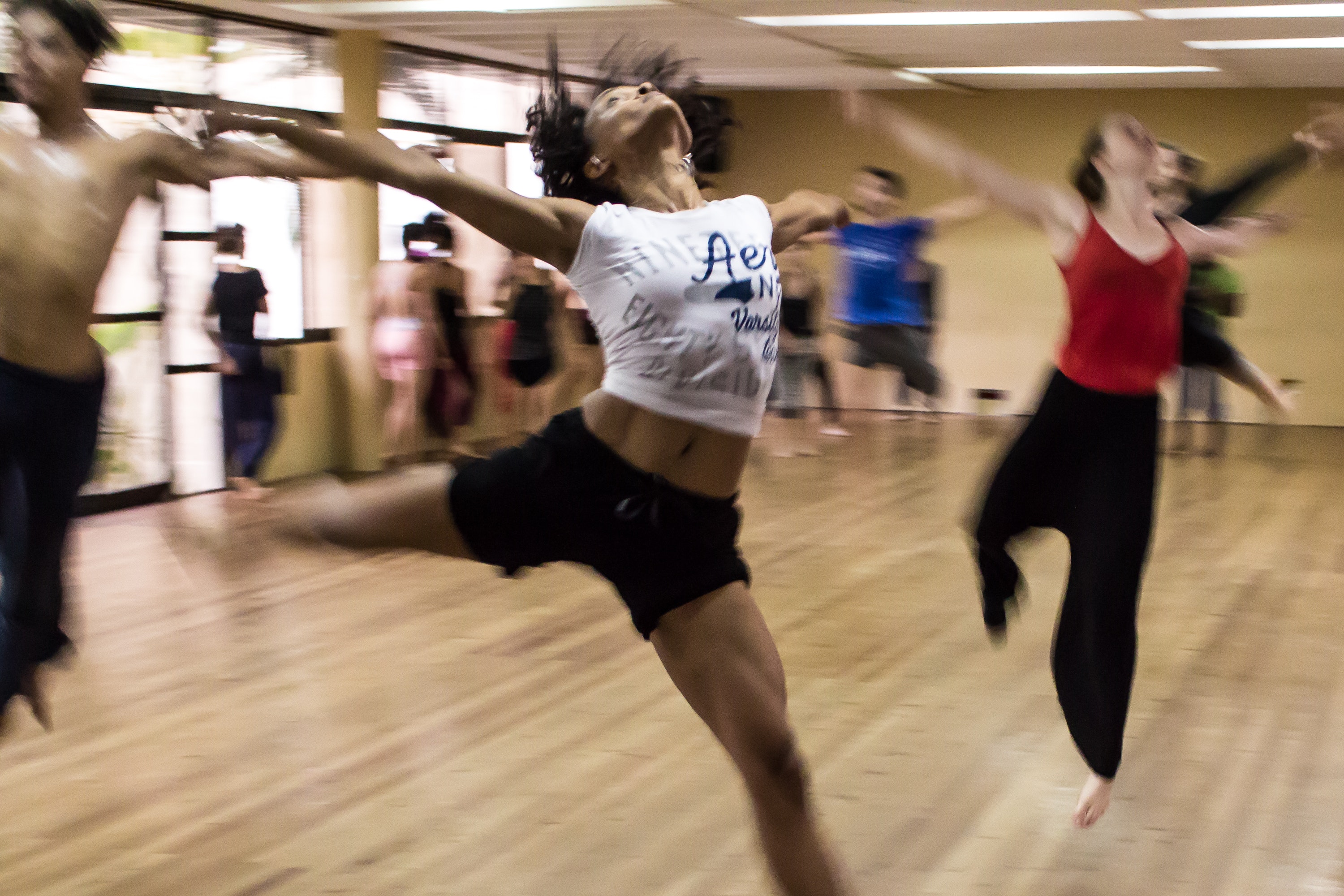Words by Bengi-Sue Sirin.
For those of us who watch rather than create dance, the studio is a mysterious place. We can only wonder about it as a site of possibility — choreographic or romantic. Technology’s gift to dance voyeurs (YouTube) is packed with footage which shows us how choreography can develop. However, we don’t get to see much of the relationship stuff.
We know from watching it that dance is a uniquely physical art form, relying on the synthesis of multiple bodies, qualities of movement, and emotions. With the turning off of the voice, dancers must heighten their sensual engagement with one another. Surely sometimes, we speculate, all this physical and emotional contact work must arouse some facet of the erotic imagination? Director Alan Brown uses this no doubt pretty common assumption as his choreographic stimulus for his 2013 film Five Dances. The question he explores is: How does the intimacy of dance lend itself to the intimacy between the dancers?
The medium of film helps to clarify this. Due to Five Dances being a scripted movie, the dancers are framed as individual characters enshrined in a complex web of connections, which is shaped by their interactions throughout the choreography.
The protagonist of Five Dances is 18-year-old Chip, a Rambert-level talented dancer pursuing his dreams in New York. Things aren’t all Hollywood and happiness, however; this story is given the credibility of realism by his alcoholic mother in the background, cruelly blackmailing him to return home whilst showing zero interest in his achievements. Even lower in funds than he is supporters, Chip sleeps in the rehearsal studio after his four fellow dancers leave. Alas, dance is an expensive industry to penetrate, particularly for scholarship-dependent, low-income talents like Chip. Played by Broadway star Ryan Steele (himself from a full-blown ‘dance family’ wildly far removed from his character’s difficulties), Chip impresses the choreographer so much that despite being by far the least experienced dancer, he lands the coveted solo section of the piece.
This is where Brown’s directing goes beyond choreography and into the intricacies of working within a dance team in such a competitive and precarious industry. To name but one, the inevitable envy that simmers beneath the surface when your best is simply not as good as somebody else’s. Brown directs in minute choreographies to show the natural jealousies of the other dancers: nuance of eye rolls and arm folds. On the other end of the emotional spectrum, he shows us the many selfless moments, for example when Katie kindly accommodates Theo’s difficulty with a movement by offering to alter her own. We see the immense amount of giving and sharing to be found in the studio, of material things like food, of jokes, of stretches, even of homes when Chip’s lack of one is discovered… These ranging intimacies transcend the amicable footage a dance-fan may find on a YouTube studio documentary, conversely made more realistic and lifelike by the script.
Five Dances has much to show of the most intimate of connections, too. Out of these five particular dancers, only one does not sleep with any of the others. I am sure this is an unusually high proportion of inter-company sexual relations; many dancers are obviously capable of keeping it professional. In this regard, Brown deviates from realism somewhat. By doing so, he poses some interesting questions. Of morality: Can the relationship between a choreographer and one of their dancers be on equal terms? And of society: Is same-sex intimacy far enough in the mainstream that sensual male-male duets are now totally normalised? Personally, I find this particular choreographer/dancer dynamic to be manipulative and destructive, and sadly I doubt the abstinence of the dance world to Weinstein-like career-wielders. And I seriously adore the chemistry between Chip and Theo in their duet, making their subsequent sexual ‘contact improvisation’ all the more gratifying. These are aspects of the dance lifestyle that no other platform bar memoir can expose to the public. In true post-modern style, the fictionalised version (film) can reveal more than the ‘true’ version (our trusty YouTube interviews and footage).
Amongst all these complex amorous tanglings, it is easy to see how dancing becomes escapism. The opening scene shows Chip practicing his solo alone, immersed in the spins, leaps and stretches of his passion. With cinematic emphasis, each zenith of movement is slowed, and proximity to Chip’s body and face veers. Here too, the medium of film portrays details too technological for live performance. Having said that, I would certainly like to see the piece the troupe are working on in real life. It is strong and sure-of-itself choreography (or should I say meta-choreography, as each stage of creation must have been broken down for the progression of scenes… Confusing!)
The movement in Five Dances was choreographed by real-life American dancemaker Jonah Bokaer, whose time with the Merce Cunningham Dance Company is evident through the distinctive torso and limb shapes borne out by the dancers. It is never clear which music it is set to, as the gorgeous Scott Matthew acoustic tunes operate as film soundtrack, not accompaniment. For me, the most tonal moments of dancing were those without music; when the dancing of the bodies was soundtracked by choreographic counts, intakes of breath, quiet strains, contact with the flesh and the floor. These were real, documentary-like instances of the true intimacy of rehearsal, real moments of joking and friendship, messing around and laughing, duetting as foreplay… I strongly believe that any dance film ought to cast actual dancers, as they act with their bodies for a living. Though Five Dances is ultimately a scripted artwork, the intimacies felt real, at points of dance and/or romance. And the studio has never looked so sexy!
